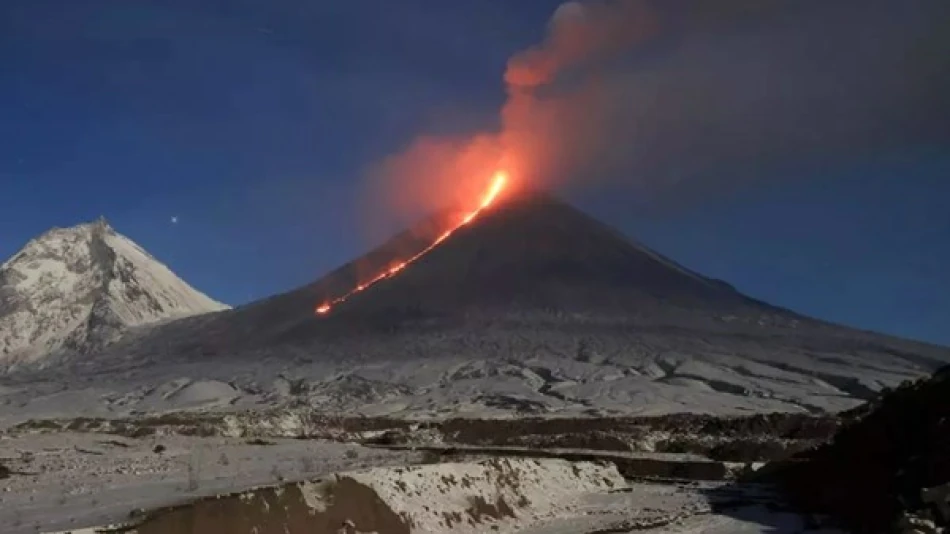
Explosive Volcanic Eruption Shakes Far Eastern Russia, Draws Global Attention
Massive 8.8 Earthquake Triggers Volcanic Eruption in Russia's Remote Kamchatka Peninsula
A powerful 8.8-magnitude earthquake off Russia's eastern coast has awakened the Klyuchevskoy volcano on the Kamchatka Peninsula, marking the region's strongest seismic event in over seven decades. The Wednesday tremor represents the most violent geological activity in this tectonically volatile area since 1952, raising immediate concerns about cascading natural disasters across the Pacific Ring of Fire.
Historic Seismic Event Rocks Pacific Region
The earthquake struck off the Russian island in the Pacific Ocean, generating seismic waves that reverberated across one of Earth's most geologically active zones. Russian geological survey authorities confirmed the 8.8-magnitude reading, placing this event among the most powerful earthquakes recorded in the region's modern history.
The 1952 comparison is particularly significant, as that earthquake triggered widespread destruction and helped scientists better understand the complex tectonic interactions along the Pacific Plate boundary. The current event suggests similar geological forces are at play, potentially signaling a period of increased seismic activity across the broader region.
Klyuchevskoy Volcano Responds to Seismic Trigger
The Klyuchevskoy volcano, one of Kamchatka's most active and dangerous volcanic peaks, began erupting following the massive earthquake. This response illustrates the interconnected nature of seismic and volcanic systems along the Pacific Ring of Fire, where tectonic pressure can directly influence magma movement and volcanic activity.
Klyuchevskoy stands as Eurasia's tallest active volcano at 4,754 meters, with a history of explosive eruptions that can impact regional air travel and local communities. The volcano's activation following such a significant earthquake raises concerns about the potential scale and duration of the eruption.
Aftershock Warnings Signal Continued Danger
Russian geological authorities have issued warnings about extremely violent aftershocks expected to follow the main earthquake. These secondary tremors often prove nearly as destructive as the initial event, particularly in a region where infrastructure must withstand regular seismic stress.
The aftershock pattern will likely influence the volcano's continued activity, as additional seismic pressure could either intensify the eruption or trigger activity in neighboring volcanic systems across the peninsula.
Regional and Global Implications
Kamchatka Peninsula's location makes it a critical monitoring point for Pacific Rim seismic activity. Events of this magnitude often correlate with increased geological instability across the entire Ring of Fire, potentially affecting Alaska, Japan, and other tectonically active regions.
The combination of major earthquake and volcanic eruption also poses immediate risks to regional aviation routes, as volcanic ash can ground flights across vast distances. The 2010 Eyjafjallajökull eruption in Iceland demonstrated how remote volcanic events can disrupt global transportation networks.
This dual geological event underscores the ongoing challenges of monitoring and responding to natural disasters in Russia's vast, sparsely populated eastern territories, where rapid response capabilities remain limited despite the region's known geological volatility.
 Layla Al Mansoori
Layla Al Mansoori







